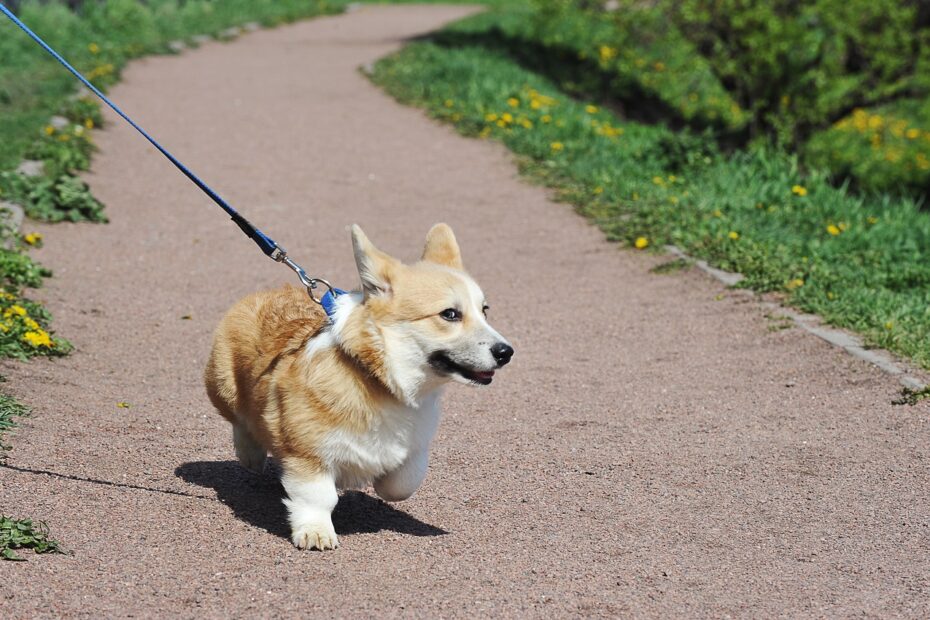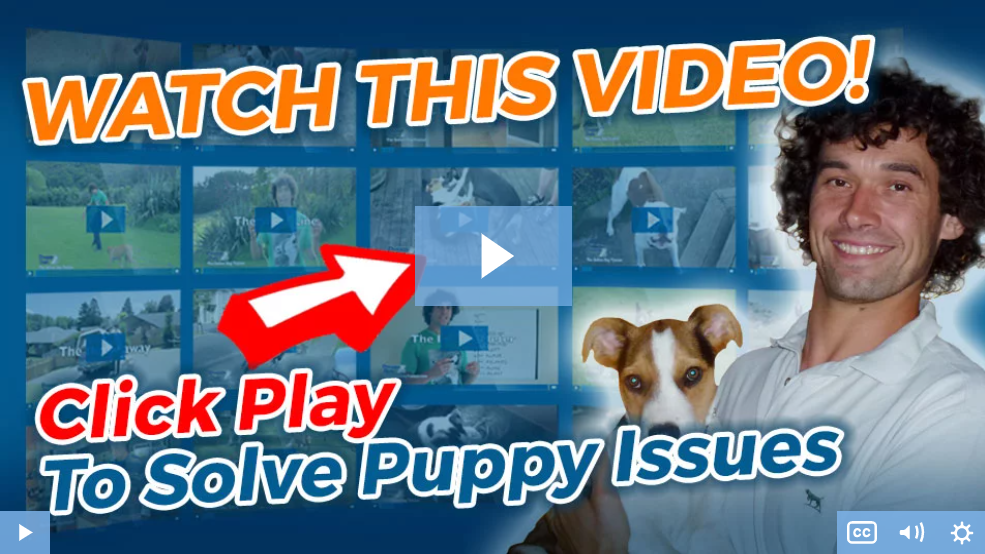If your puppy chews the leash, then trust me, they’re not the only one.
Puppies chew everything. If you don’t want them to chew on it, you’d better hide it away.
Shoes, furniture, clothes, and yep, leashes, are all fair game.
But natural though the chewing instinct is, it’s still a pain. No matter how small a dog is, they still have the strength and the tenacity to turn every walk into a tug of war. Which, as I’m sure you don’t need me to tell you, is a massive pain in the proverbial.
Why do they do it? Take your pick…
Teething, frustration, boredom, overexcitement, over-arousal, curiosity, attention-seeking… the list goes on.
Is it something that can be overcome? It is indeed.
Changing the leash, teaching basic obedience, dialing down their excitement, giving them something else to chew on… when it comes to tackling leash chewing, you won’t find yourself short of solutions.
Will the solutions work? Sure… providing you go about them the right way.
Is there a way to improve your chances of success? Absolutely.
How? Teach them how to take control of their emotions.
No matter how young a dog is, it’s never too early to teach them emotional control.
If your puppy is calm, focused, in control, and ready and willing to listen, dealing with leash chewing becomes a walk in the park.
A wark in the park with no mouthing, chewing, or tugging.
Can’t imagine what that looks like? Then check out these 5 step-by-step calming exercises from the Online Dog Trainer, Dan Abdelnoor. (see video below)
Watch the video, take the advice, and you’ll be reaping the rewards before you know it.
(video will open in a new window)
Why Do Puppies Chew?
Puppies chew everything. If they’re not asleep, then they’re probably chomping on something they shouldn’t.
Furniture, kids’ toys, electric wires, cords, shoes… basically, if they can get their paws on it, they’re going to chew it.
But why exactly do they do it?
Curiosity
Most of the time, chewing is nothing more than curiosity.
Everything is new to your puppy at this stage. How better to test out all those new textures and things than by wrapping their jaws around them?
The thing is, puppies don’t have boundaries. They don’t know that chewing on your $500 sneakers is out of order. They don’t get that chewing on an electrical cord might not be the wisest of moves.
Basically, they don’t know very much at all until maturity and training kick in.
Frustration
Sometimes, puppies chew out of frustration and boredom.
Puppies aren’t geared to lie around all day doing nothing. If they’re not napping or eating, they want to play. Preferably with you.
If you don’t give them the attention and the mental and physical stimulation they crave. They’re going to get bored, frustrated, and prone to turning your favorite pair of shoes into a chew toy.
Relief
Finally, puppies chew because it feels good.
Teething can be painful; chewing on something can soothe their gums, relieve the discomfort, and distract them from the pain.
If the chewing goes on beyond the teething stage, it could be a sign that your pup is experiencing dental problems.
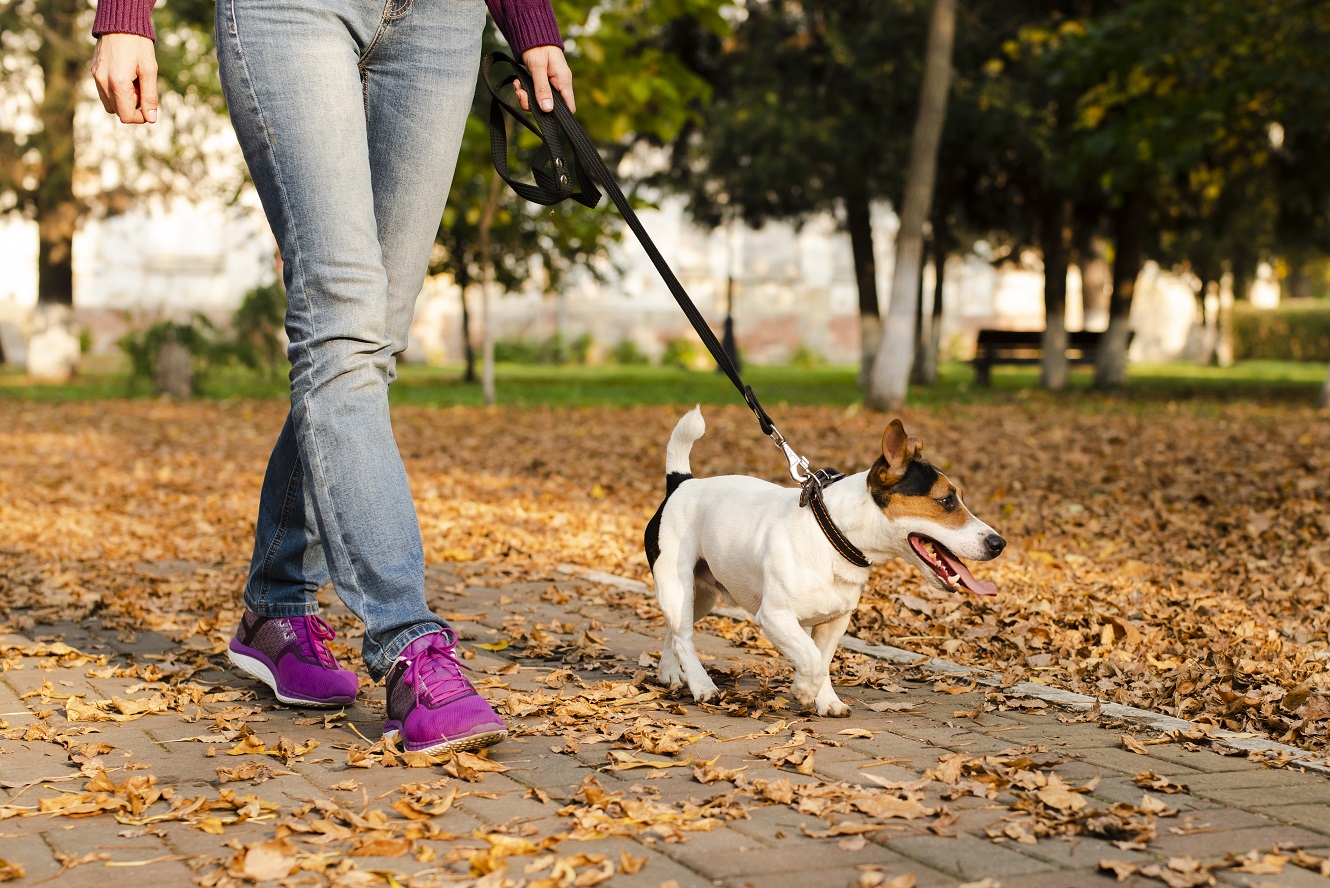
But Why Do Puppies Chew the Leash?
So, we’ve established that puppies chew. We know some of the reasons why they do it.
But why do they chew on leashes specifically? What is about a leash that’s so irresistible?
Although every pup is different, some of the most common reasons they chew the leash include…
Frustration
Puppies are used to gambling around freely. Pop a leash on them, and suddenly, all that freedom disappears.
You know the leash is for your pup’s safety, but they don’t. As far as they’re concerned, it’s annoying, it’s restricting, and it deserves to be chewed on as ferociously as possible.
Lack of Alternatives
Puppies are always going to chew on something. If you don’t provide them with safe outlets for the behavior, they’ll find ways around it.
If your pup doesn’t have enough chew toys to satisfy their urge, the leash is a convenient alternative.
Curiosity
If your dog hasn’t yet got used to the leash, they might still be curious about what it actually is. And what do puppies do with things that spark their curiosity? Yep… chew it.
Attention Seeking
Some puppies like to be the center of attention at all times.
And make no mistake, puppies are clever. Once they realize chewing on the leash gets them more attention than walking calmly, there’s no going back.
Even if the attention isn’t positive, it doesn’t stop them… after all, even negative attention is better than no attention whatsoever.
Over Arousal
Puppies can get over-aroused and over-excited at the drop of a hat.
Remember, everything is new to them at this age. Even something as mundane as a walk is a huge, spellbinding adventure worth getting excited about.
When dogs get over-aroused, they look for ways to release the tension. Cue mouthing, tugging, and jumping.
If they’re already in a fever pitch of excitement before you’ve even stepped out the front door, you can forget any thoughts of a calm, orderly stroll.
Mobile Pacifier
Some dogs just like carrying something in their mouth. And while you might see the leash as a means of keeping your dog safe, they prefer to see it as a mobile pacifier.
Lack of Training
Puppies don’t know what’s acceptable and what isn’t until someone teaches them.
If your leash training has been hit and miss (or just completely AWOL), they won’t have any idea that the leash is something to be walked on, rather than chewed.
Related Post: How To Stop A Dog Chewing Everything In Sight
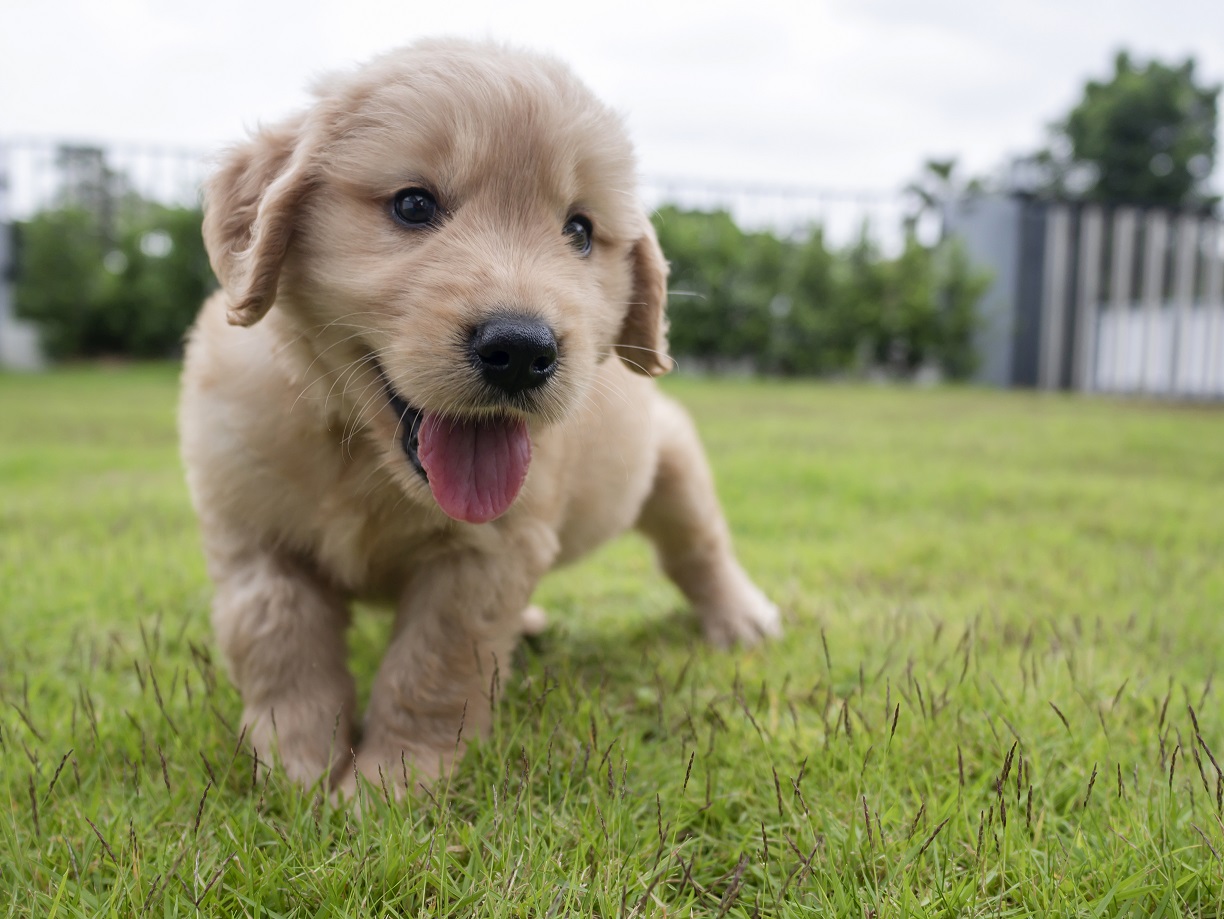
What Can I Do To Stop My Puppy Chewing The Leash?
Ready to put an end to your puppy’s relentless chewing habit? Then it’s time to start working on the fix.
Before you do anything else, rule out any medical reasons for their behavior.
If your puppy is chewing excessively because of dental problems or another health complaint, you’re going to need to address that before anything else.
Book a visit to the vet. If they find an issue, they’ll work with you to correct it. If they don’t, you can start moving forward with the following steps.
Identify the Root Cause
Consider the wider picture.
Does your pup chew on everything, or do they restrict their attention to the leash?
If they chew on everything, they might be teething, or they might simply like the sensation.
If you haven’t already, invest in a stash of safe chew toys. Each time you catch them chewing on something inappropriate, simply redirect them to a toy.
If they reserve their behavior for the leash, you need to work out why.
Do they get overexcited before walks (if they do, these 5 calming techniques are going to be invaluable)?
- Do they crave attention?
- How were they trained to walk on the leash?
- Were they trained at all?
Once you’ve identified the root cause of the problem, you’re one step closer to addressing it.
Earn Their Respect
Before you start introducing your puppy to new training methods, there’s one thing you need to do first: earn their respect and trust. By taking them through these 5 step-by-step calming exercises, you’ll do just that.
Just as crucially, the exercises are going to calm your puppy down and get them in the right frame of mind for training.
Check the video out below and start introducing the exercises into your routine as soon as you can. The calmer, more controlled, and more focused your dog, the easier training becomes.
(video will open in a new window)
Dial Down the Excitement
When puppies get overstimulated and excited, they start mouthing, tugging, and jumping. If you’re dealing with a particularly excitable puppy, it’s time to dial the excitement down a notch.
Instead of making a big song and dance about going for a walk, make it perfunctory.
Don’t signal to your puppy that they’re about to go out.
Simply take out their leash, ask them to sit, and attach the leash to their collar.
Don’t clap your hands, and don’t make excited noises. The calmer you are, the calmer they’ll be.
The aim here isn’t to take the joy out of walks. It’s simply to make them less of a battleground.
Find an Alternative
Puppies are always going to chew. Teething will see to that.
Even after teething is done and dusted, some dogs will always be big chewers.
Beat them at their own game by giving them a ball or a toy to carry during walks. It’ll keep your leash safe and their mouths busy. Win-win!
Distract Them
Next time your puppy goes to mouth the leash, avoid jerking it out of their mouth or fighting them for control. Instead, make a sharp noise and command them to sit.
Do it as soon as they make a grab for the leash; if they’re already chewing happily away, they’re less likely to listen to you.
Teach Them to ‘Drop’
If you’ve already started teaching your puppy basic obedience, great. If you haven’t, it’s time to start.
The first command to teach them? ‘Drop.’
Teaching them to drop won’t stop them from making a grab for the leash. What it will do is encourage them to let it go when you tell them to.
Next time your puppy’s calm and in the mood for some training, take one of their toys and give it to them.
Once they take it, pop a treat in front of their nose and say ‘drop.’ It won’t take them long to weigh up the options and decide they’d rather have the treat than the toy.
The moment they drop the toy, praise them, and give them the treat. Repeat the process until they start dropping on command.
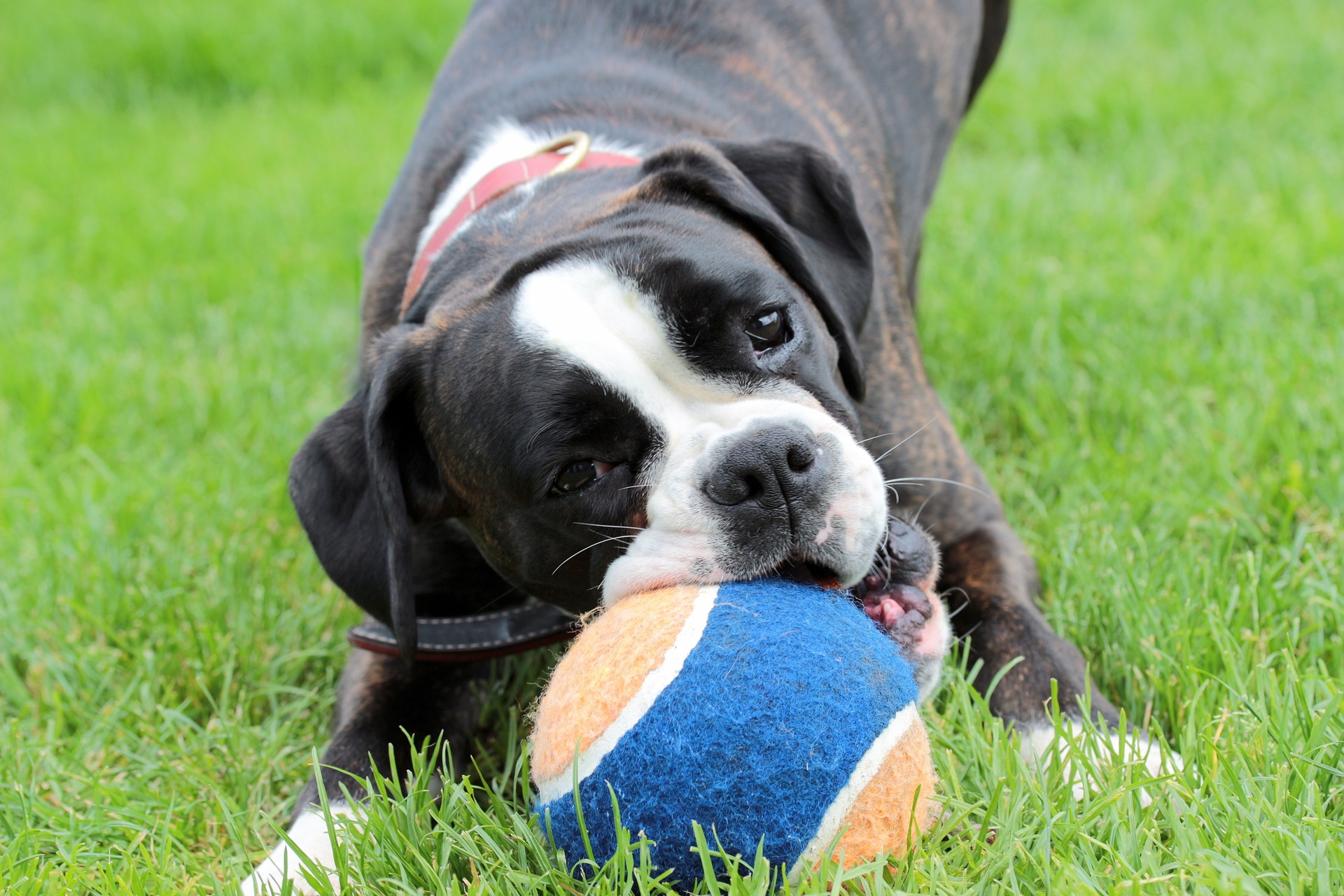
Try a Chewing Deterrent
Chewing deterrents are bitter-tasting sprays that you can apply to furniture, clothing, and other items to prevent undesirable chewing.
Spray a very small amount onto the bottom half of the leash. Once they get a taste of it, there’s very little chance of them coming back for more.
Change their Leash
If you attach a leash to a collar, it has the unfortunate habit of dangling down to the front or side of your puppy’s mouth.
No wonder they can’t resist the urge to give it a little chew.
Remove the temptation by investing in a harness. This will position the leash away from their mouth.
They might still make a grab for it, but they’ll need to work much harder for it than before.
While we’re on the same subject, consider ditching your leather or nylon leash for a chain leash. Once they get their first taste of metal, they’re unlikely to want to go back for more.
If they persist in chewing the chain, switch back to leather or nylon…. you can find another way to deal with the chewing, but you can’t grow your pup a new set of teeth.
Final Thoughts
Puppies are always going to chew. It’s a natural instinct that most dogs will grow out of with time.
But remember – habits can become ingrained. The more effort you put into stopping undesirable behaviors now, the fewer problems you’ll face down the line.
Fortunately, most puppies learn quickly. With the right techniques, consistent training, and plenty of patience, you’ll soon have them walking on the leash like a pro.
